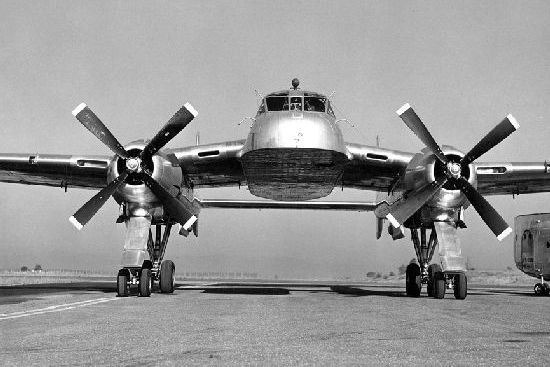Fairchild XC-120 Packplane on:
[Wikipedia]
[Google]
[Amazon]
The Fairchild XC-120 Packplane was an American experimental


Cargo Carrier Concept:Design-logic for Airborne Logistics: The Fairchild XC-120 Pack-plane
. ''
Video about the XC-120
* Contains segment about the plane. {{USAF transports Fairchild C-120 Packplane C-120 Twin-boom aircraft Modular aircraft Aircraft first flown in 1950 Mid-wing aircraft Twin piston-engined tractor aircraft
modular aircraft
A modular aircraft or pod plane is a design principle for an aircraft where the payload carrying section can be routinely detached from, and reattached to, the rest of the aircraft. It can be compared to the function of intermodal shipping contai ...
first flown in 1950. It was developed from the company's C-119 Flying Boxcar
The Fairchild C-119 Flying Boxcar (Navy and Marine Corps designation R4Q) was an American military transport aircraft developed from the World War II-era Fairchild C-82 Packet, designed to carry cargo, personnel, litter patients, and mechani ...
, and was unique in the unconventional use of removable cargo pods that were attached below the fuselage, instead of possessing an internal cargo compartment.
Design and development
The XC-120 Packplane began as a C-119Bfuselage
The fuselage (; from the French ''fuselé'' "spindle-shaped") is an aircraft's main body section. It holds crew, passengers, or cargo. In single-engine aircraft, it will usually contain an engine as well, although in some amphibious aircraf ...
(''48-330'', c/n 10312) with a point just below the flight deck
The flight deck of an aircraft carrier is the surface from which its aircraft take off and land, essentially a miniature airfield at sea. On smaller naval ships which do not have aviation as a primary mission, the landing area for helicopte ...
cut off to create the space for the detachable cargo pod. The fuselage was raised by several feet, and smaller diameter "twinned" wheels were installed forward of each of the main landing gear struts to serve as nosewheels, while the main struts were extended backwards.
All four landing gear units, in matching "nose" and "main" sets, could be raised and lowered in a scissorlike fashion to lower the aircraft and facilitate the removal of a planned variety of wheeled pods which would be attached below the fuselage for the transport of cargo. The goal was to allow cargo to be preloaded into the pods; it was claimed that such an arrangement would speed up loading and unloading cargo.
Production aircraft were to be designated C-128.
Operational history
Only one XC-120 was built. Though the aircraft was tested extensively and made numerous airshow appearances in the early 1950s the project went no further. It was tested by the Air Proving Ground Command at Eglin Air Force Base, Florida, in 1951, before the project was abandoned in 1952. The prototype was eventually scrapped.Specifications (XC-120)


See also
References
*Evans, Stanley H.Cargo Carrier Concept:Design-logic for Airborne Logistics: The Fairchild XC-120 Pack-plane
. ''
Flight
Flight or flying is the process by which an object moves through a space without contacting any planetary surface, either within an atmosphere (i.e. air flight or aviation) or through the vacuum of outer space (i.e. spaceflight). This can be a ...
'', 21 September 1950. pp. 331–333.
External links
Video about the XC-120
* Contains segment about the plane. {{USAF transports Fairchild C-120 Packplane C-120 Twin-boom aircraft Modular aircraft Aircraft first flown in 1950 Mid-wing aircraft Twin piston-engined tractor aircraft